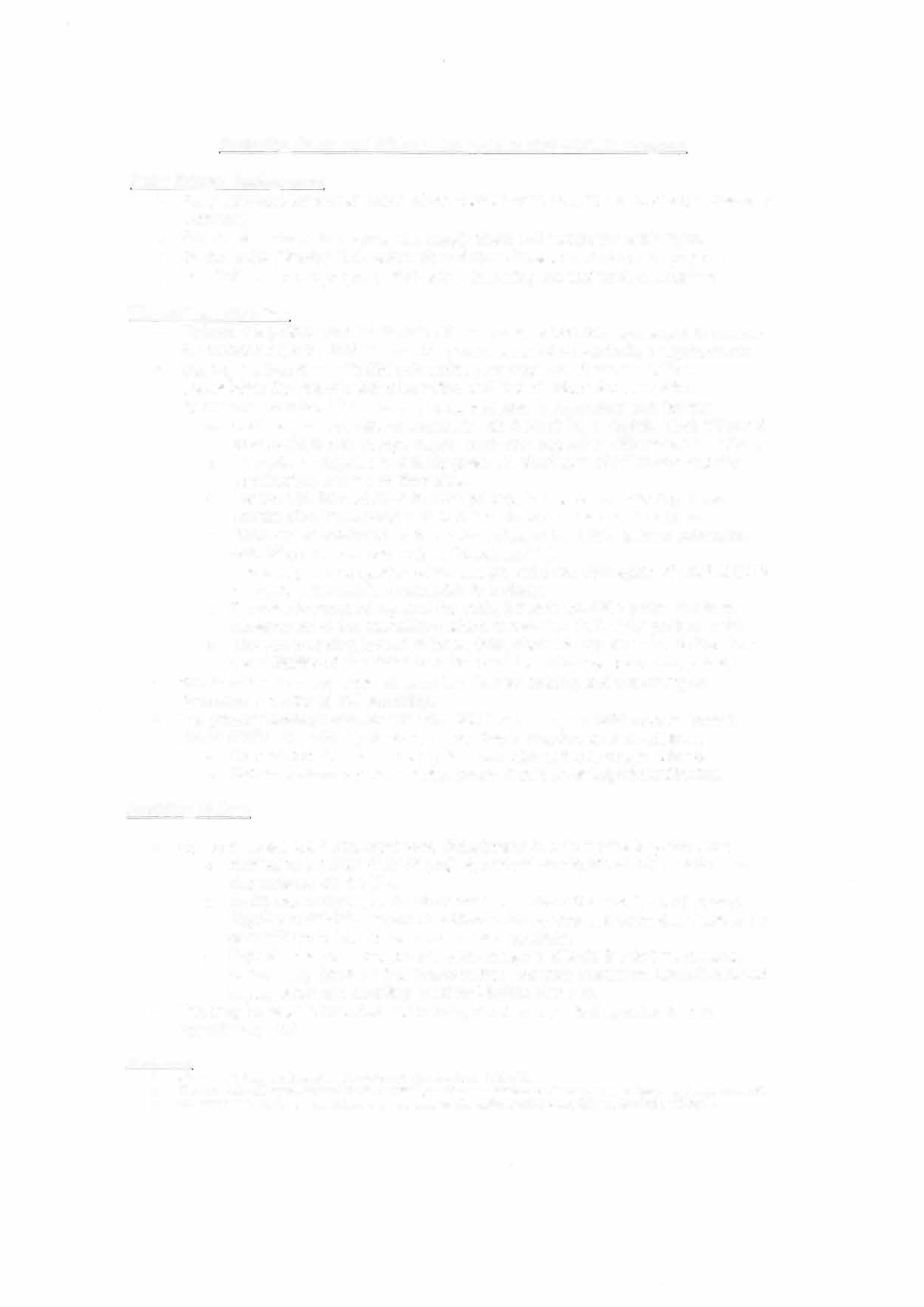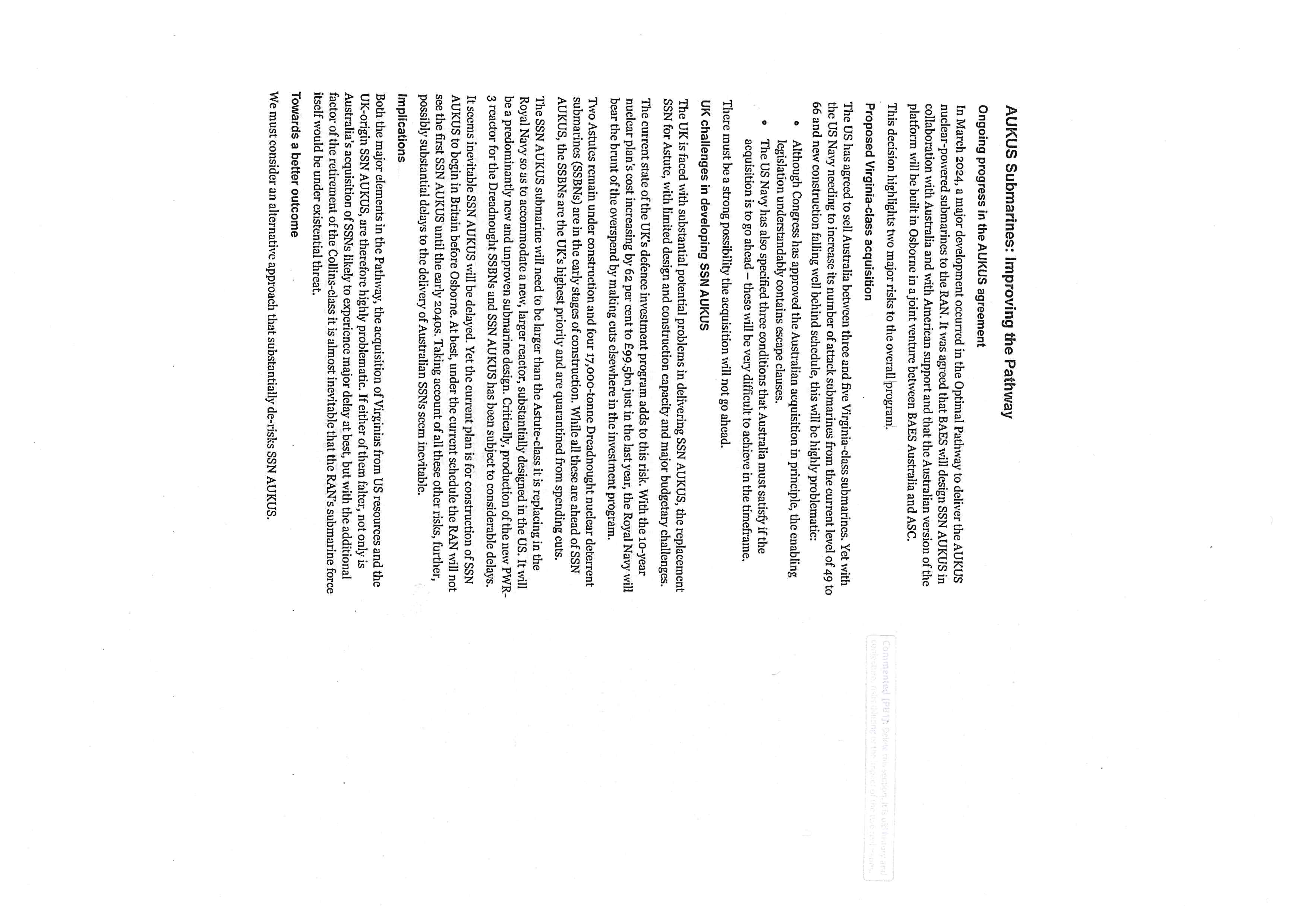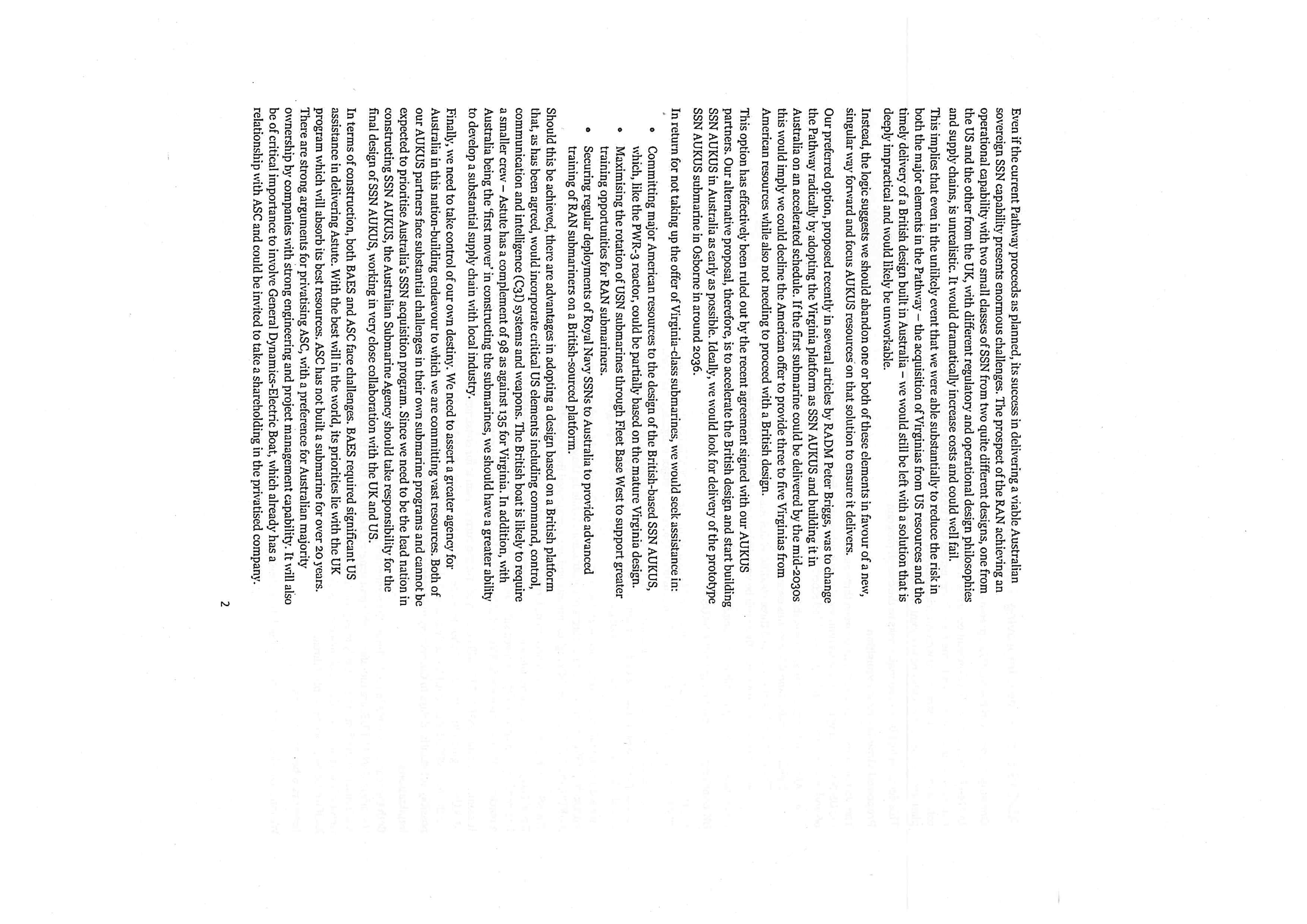
FOI/2024/227
No part of this document has been authored by the Australian Government. This document was provided to the Department by
a third party during a meeting. It was provided in the form in which it appears below.
Reducing Costs and Risks to Australia's SSN AUKUS Program
Peter Briggs' Background
• Early advocate for consideration of the nuclear transition, (2012-13 Study & Report to
Defence).
• Oberon Squadron Command, with supply chain and manpower challenges.
• Senior policy Director RAN submarines during development of Collins project.
• Led Collins get well program 1999-2001, delivering two fast track submarines.
The Current Situation
• Reflects the political and intellectual effort to achieve US/USN agreement to release
• the technology, not a logical, practical process, based on Australia's requirements.
Starting the transition with 850 submarine personnel and 6 ageing Collins
• exacerbates the risk of a failed transition and loss of submarine capability.
As set out in our Brief (Attachment 1 ), current plan is impractical and flawed:
o Achieving an operational capability with 2 Block IV, 1 Virginia Block VII and 5
SSN AUKUS with design, supply chain and regulatory differences is unlikely.
o The sale of Virginias is unlikely given US shortages of SSNs and ongoing
construction and repair difficulties.
o For the UK, SSN AUKUS is a 3rd priority, behind commissioning 4 new
construction Dreadnought class submarines and the final 2 Astutes.
o Risks are exacerbated by the parlous state of the UK's national submarine
capability and Defence budget (Attachment 2).
o The timely UK completion of the design, build and debugging of SSN AU KUS,
to support Australia's construction is unlikely.
o If it were to succeed, against the odds, it hands the UK a major role in the
sustainment of the capability - which constitutes 70% of the project costs!
o The compounding impact of these risks, demands urgent political direction to
•
avoid likelihood of a failed transition and loss of our submarine capability.
Any transition is highly dependent on the USN for training and sustaining an
• Australian operational SM capability.
The primary strategic attraction for the USN is obtaining an SSN capable base in
HMAS STIRLING, with dry docking capabilities in Henderson and Adelaide.
o Important that Australia recognises and utilises the leverage offered.
o Future controversy over foreign bases should be anticipated/mitigated.
Avoiding Failure
• My most recent ASPI Strategist post, (Attachment 3) sets out the key elements:
o Australian led SSN AUKUS project, centred on privatised ASC, minimising
dependence on the UK.
o BAES the designer, as a sub-contractor, under ASC direction and control.
o Significant GD-EB support to achieve a timely design focussed on Australia's
capability to build, operate and sustain capability.
o Expedite the program, complete the design and build the first in Adelaide,
delivered by 2038 as first Collins retires, ensuring maximum Australian based
supply chain and avoiding need for Virginia stop gap.
• This may be what is intended and in train, if not, firm political direction is now
urgently required.
Attachments:
1.
AUKUS Submarines: Improving the Pathway, Jon Stanford, 14Mar24.
2.
The sad state of Royal Navy submarine capability- and implications for Australia, Peter Briggs, Strategist, 30Jan24.
3.
To control our destiny, we must learn from our past for the AU KUS SSN, Peter Briggs, Strategist 12Mar24.
Page 1

FOI/2024/227
Page 2

FOI/2024/227
Page 3


